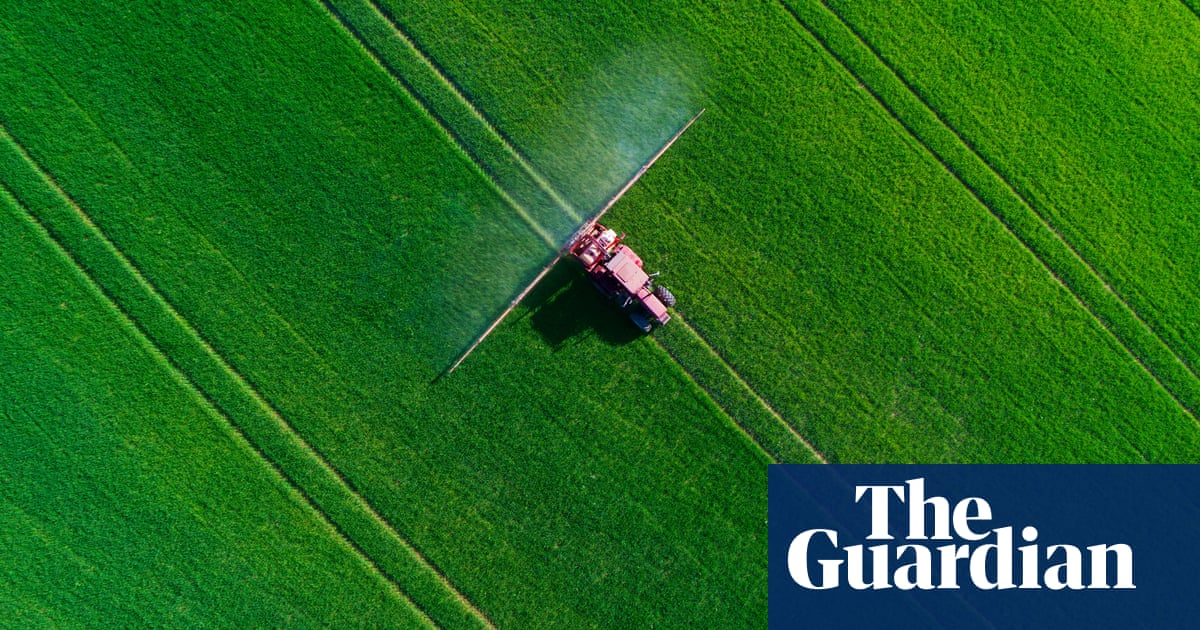Pesticides from farming leach into world’s waterways at rate of 710 tonnes a year, UN research shows
Pesticides from farming leach into world’s waterways at rate of 710 tonnes a year, UN research shows The Guardian


Sustainable Development Goals and Pesticide Pollution in Rivers

Introduction
A recent study has found that agricultural pesticides are contaminating rivers worldwide, with 13,000km of rivers exceeding safe levels of pesticide concentration. This research highlights the urgent need to address pesticide pollution in order to achieve the Sustainable Development Goals (SDGs).
Research Findings
- The study analyzed 92 common agricultural pesticides and estimated that 710 tonnes of pesticide active ingredients leach into the world’s oceans annually.
- Pesticide hotspots were identified in various regions, including central and western United States, Argentina, India, East China, and Southeast Asia.
- Rivers in Europe received an intermediate pesticide yield, with hotspots along the Po and Danube rivers.
- The calculations were based on estimates of annual pesticide use in 144 major water catchment areas, totaling 940,000 tonnes. Globally, approximately 3 million tonnes of agricultural pesticides are used each year.
- 82% of pesticides degraded into other molecules, 10% remained as residues in the soil, and 7.2% (about 68,000 tonnes) leached into aquifers.
Implications and Recommendations
- Pesticide degradation can result in the formation of toxic daughter substances that persist in the environment.
- 730 tonnes of pesticides enter river systems annually, with 710 tonnes reaching the world’s oceans. Although this accounts for less than 0.1% of net inputs, it negatively impacts stream invertebrates and near-coast ecosystems.
- Pesticide levels exceeding safety thresholds were found in over 13,000km of rivers, with poorly understood impacts on aquatic ecosystems.
Conclusion
The study emphasizes the importance of addressing pesticide pollution to achieve the SDGs. Lead author Federico Maggi highlights that even small amounts of pesticides can result in concentrations above safety limits. The researchers urge the adoption of sustainable management strategies and effective monitoring systems to reduce pesticide use and protect the environment.
Source
The study is published in the journal Nature.
SDGs, Targets, and Indicators
-
SDG 6: Clean Water and Sanitation
- Target 6.3: By 2030, improve water quality by reducing pollution, eliminating dumping and minimizing release of hazardous chemicals and materials.
- Indicator 6.3.2: Proportion of bodies of water with good ambient water quality.
-
SDG 14: Life Below Water
- Target 14.1: By 2025, prevent and significantly reduce marine pollution of all kinds, particularly from land-based activities, including marine debris and nutrient pollution.
- Indicator 14.1.1: Index of coastal eutrophication and floating plastic debris density.
-
SDG 15: Life on Land
- Target 15.1: By 2020, ensure the conservation, restoration, and sustainable use of terrestrial and inland freshwater ecosystems and their services.
- Indicator 15.1.2: Proportion of important sites for terrestrial and freshwater biodiversity that are covered by protected areas.
Analysis
The article highlights the issue of agricultural pesticides leaching into waterways, which is connected to several SDGs.
1. SDG 6: Clean Water and Sanitation
The issue of pesticides exceeding safe levels in rivers globally is directly related to SDG 6, which aims to ensure clean water and sanitation for all. The presence of pesticides in waterways poses a threat to water quality and can have negative impacts on aquatic ecosystems.
2. SDG 14: Life Below Water
The leaching of pesticides into the world’s oceans is connected to SDG 14, which focuses on the conservation and sustainable use of marine resources. The presence of pesticides in the oceans contributes to marine pollution and can harm marine life.
3. SDG 15: Life on Land
The issue of pesticides leaching into aquifers and rivers is also relevant to SDG 15, which aims to protect and restore terrestrial ecosystems. The contamination of land and freshwater ecosystems with pesticides can have detrimental effects on biodiversity and ecosystem services.
Based on the content of the article, the following targets and indicators can be identified:
Target 6.3: By 2030, improve water quality by reducing pollution, eliminating dumping and minimizing release of hazardous chemicals and materials.
- Indicator 6.3.2: Proportion of bodies of water with good ambient water quality.
Target 14.1: By 2025, prevent and significantly reduce marine pollution of all kinds, particularly from land-based activities, including marine debris and nutrient pollution.
- Indicator 14.1.1: Index of coastal eutrophication and floating plastic debris density.
Target 15.1: By 2020, ensure the conservation, restoration, and sustainable use of terrestrial and inland freshwater ecosystems and their services.
- Indicator 15.1.2: Proportion of important sites for terrestrial and freshwater biodiversity that are covered by protected areas.
Table: SDGs, Targets, and Indicators
| SDGs | Targets | Indicators |
|---|---|---|
| SDG 6: Clean Water and Sanitation | Target 6.3: By 2030, improve water quality by reducing pollution, eliminating dumping and minimizing release of hazardous chemicals and materials. | Indicator 6.3.2: Proportion of bodies of water with good ambient water quality. |
| SDG 14: Life Below Water | Target 14.1: By 2025, prevent and significantly reduce marine pollution of all kinds, particularly from land-based activities, including marine debris and nutrient pollution. | Indicator 14.1.1: Index of coastal eutrophication and floating plastic debris density. |
| SDG 15: Life on Land | Target 15.1: By 2020, ensure the conservation, restoration, and sustainable use of terrestrial and inland freshwater ecosystems and their services. | Indicator 15.1.2: Proportion of important sites for terrestrial and freshwater biodiversity that are covered by protected areas. |
Behold! This splendid article springs forth from the wellspring of knowledge, shaped by a wondrous proprietary AI technology that delved into a vast ocean of data, illuminating the path towards the Sustainable Development Goals. Remember that all rights are reserved by SDG Investors LLC, empowering us to champion progress together.
Source: theguardian.com

Join us, as fellow seekers of change, on a transformative journey at https://sdgtalks.ai/welcome, where you can become a member and actively contribute to shaping a brighter future.







